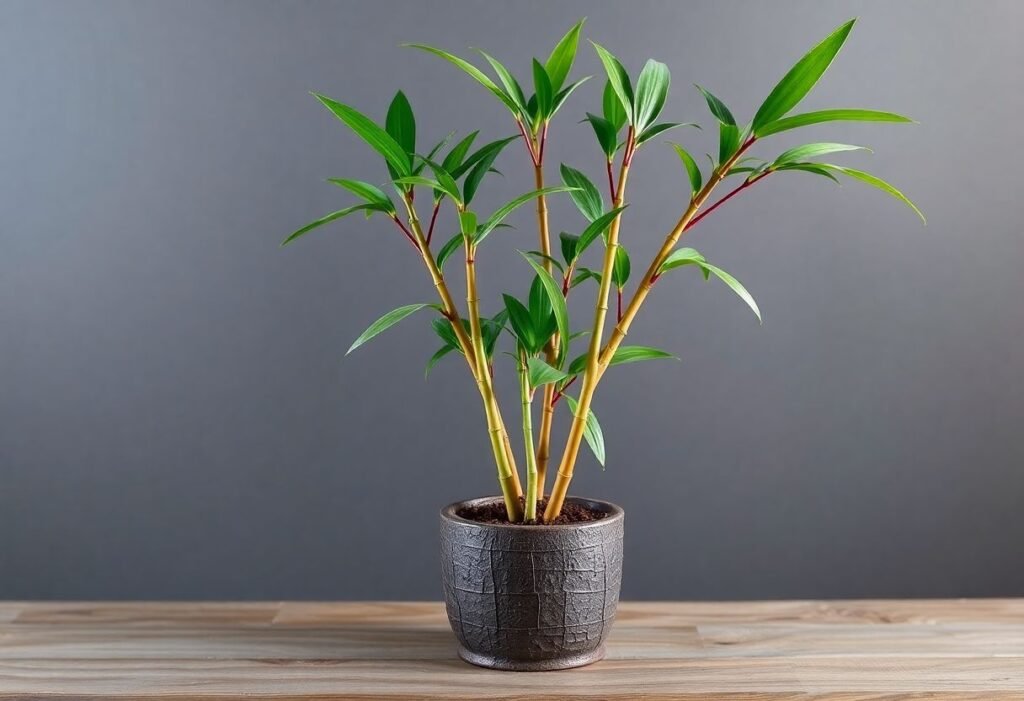Why is Repotting Bamboo Essential?
Repotting bamboo is crucial to maintaining its health. As it grows, its roots can become cramped within the pot, making it difficult for the plant to absorb the necessary nutrients and water. When you learn how to repot bamboo, you’re giving it the room it needs to thrive and access fresh nutrients. This step helps prevent stunted growth and potential diseases that can occur when bamboo is overcrowded.
When Should You Repot Bamboo?
The ideal time to repot bamboo is in the spring, just as the plant awakens from its winter dormancy. At this time, bamboo begins to grow rapidly again, and repotting will encourage it to spread its roots and flourish. Keep an eye out for signs like roots emerging from the drainage holes or difficulty in maintaining proper moisture in the soil, which indicate it’s time to repot.
Preparing the New Pot for Bamboo
Before you start the repotting process, prepare the new pot. It should be larger than the previous one to allow room for growth. Be sure to select a soil mix that drains well; bamboo does not like to sit in water. The new pot must have drainage holes to ensure proper water flow and prevent root rot, keeping your bamboo healthy.
Carefully Remove Bamboo from its Pot
When you’re ready to repot bamboo, begin by watering it a day prior. This extra moisture helps ease the removal process. Grasp the plant at the base and gently pull it from the pot. If the roots are stuck, use your fingers or a small tool to gently loosen them. Be cautious not to damage the roots, as this can impact its growth and overall health.
How to Properly Repot Bamboo
Once the bamboo is out of its old pot, gently remove old soil from the roots. Position your bamboo in the new pot and cover the roots with fresh soil, making sure the plant sits at the same depth as it was in the previous pot. After planting, water it well to help settle the newly added soil around the roots.
Caring for Bamboo After Repotting
After repotting your bamboo, give it some special attention. Place it in a spot with bright, indirect sunlight, avoiding harsh direct light. In the first few days, refrain from overwatering, as the plant is adjusting. Applying a mild fertilizer can help boost its recovery during this transition period.
Common Mistakes When Repotting Bamboo
One common mistake is repotting too frequently or at the wrong time. Overpotting can lead to nutrient issues, preventing your plant from thriving. Ensure you handle the roots carefully to avoid damage, impacting the plant’s overall health. Remember to prioritize proper drainage in the new pot to avoid root rot.
Conclusion
Repotting bamboo is an essential step in fostering its health and aesthetic appeal. Follow careful steps to choose the right time for repotting, prepare the new environment, and handle your plant gently during the process. Knowing how to repot bamboo can lead to a flourishing plant that transforms your home into a vibrant oasis. Don’t hesitate—start your repotting project today and watch your bamboo thrive!
Disclaimer
This article is for informational purposes only. Always consult an expert in gardening before undertaking any plant care actions.

















